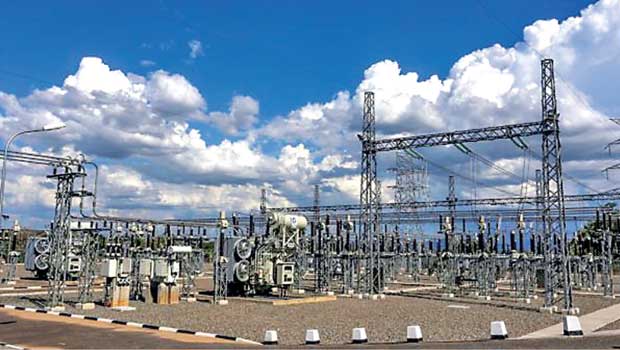27 Sep 2017 - {{hitsCtrl.values.hits}}

BY Priyantha Wijayatunga and Alexandra Soezer
As one of the 43 Climate Vulnerable Forum (CVF) member countries, Sri Lanka is not only disproportionately affected by the impacts of climate change, but is also willing to take bold domestic actions to combat it.
At the 22nd Climate Conference in Marrakesh, Morocco in 2016, CVF countries committed to ‘survive and thrive’ by ‘plotting a clear path to the future’ to green their economies and achieve one-hundred percent renewable energy generation by 2050.
The targets are indeed ambitious, especially since the per capita electricity consumption in these countries will continue to increase for the next few decades. At the same time, the opportunities presented by such a green transformation are significant.
For example, by gaining experience in designing such innovative renewable energy solutions at national scales, we are creating new business models for a new generation of utilities and inspirational ideas for current utilities. This should enable them to skip the catch-up phase and leapfrog to cutting-edge solutions.
These solutions can be easily replicated in countries throughout Asia and beyond with similar renewable energy ambitions, encouraging more countries to join this exciting green transformation.
Sri Lanka has now stepped up to implement its Marrakesh pledges by developing a comprehensive pathway toward its 2050 renewable energy target. Together, we in UNDP and ADB have developed a structured approach to assess the current and future energy scenarios, technical solutions, and financial implications of the new target.
The just-completed study is the first of hopefully many detailed assessments for several CFV member countries with ambitious renewable energy targets. There are a number of relevant lessons learned that will help other CFV member countries in their efforts to reach their targets.
What we found is an opportunity gap caused by a lack of coordination and communication between policy makers announcing low carbon targets, and the national agencies tasked to achieve them. To realize the full potential of renewable energy faster, we need to bridge this gap.
It is imperative to pursue a common understanding that a transformation to one hundred percent renewable energy generation will have positive impacts beyond climate and the environment. It will spur overall socio-economic development as well.
Several of the Sustainable Development Goals (SDGs) will be positively impacted by the shift toward renewable energy, through:
n Reducing air pollution from conventional energy such as coal to reduce the burden on the public health system (SDG 3) and enhance climate resilience (SDG 13).
n Wide adoption of renewable energy technologies to provide more opportunities for quality vocational trainings for youth (SDG 4).
n Developing robust ancillary industry, raising economic productivity and spurring job creation (SDG 8).
n Driving international and national collaboration among renewable energy market players (SDG 17), helping Sri Lanka to quickly advance technically and boosting research on state-of-the art renewable energy technologies (SDG 9).
Investing in renewables pays off
While the report has not assessed the financial implications of various sustainable development impacts, it does show the sustainable development benefits of ambitious environmental targets.
The study also encourages countries to look beyond economic figures that don’t factor in social costs and benefits in the medium and long term. This requires more research, with complex simulation models to calculate the socio-economic benefits of renewables by considering all key parameters such as health, education, economic growth, research, and new partnerships.
An investment decision toward renewable energies should be justified through a holistic assessment of impact data that consider a country’s strategy to achieve the SDGsthereby encouraging truly transformational development decisions.
On the readiness side, we realized that long-term electricity planning is already an established practice. Many relevant and detailed data and models are available domestically, with respective organizations which need to be engaged from the onset to build the foundation for new studies.
We also saw clearly that a one-hundred percent renewable energy target will change the way utilities operate. There will be producers and consumers of electricity at the same time (called ‘prosumers’) as well as intermittency in production of electricity. This will require a change of mindset in financing instruments and understanding consumer behavior.
Just as the electricity grid is decentralized, the electricity sector will require financially a more decentralized approach. Instead of focusing solely on financing large-scale industrial producers of electricity, financing will also have to be channeled to retail consumers.
These can be individual households or customers like schools, railways, malls, and more. Electric vehicles must be considered in the overall design of electricity solutions as they will be electricity storage units and thus an integral part of the grid infrastructure.
Future studies on transformation to one-hundred percent renewable energies will need to focus stronger on mainstreaming green technologies into conventional financing by linking loan instruments with measurable environmental impacts.
This will encourage financial institutions to transform together to meet the changing demand in recipient countries by rigorously greening their lending instruments. They can also develop targeted financial products for renewable energies.
Even if deployment of green technologies starts at small scale, expansion can accelerate exponentially, and financing instruments will have to match that pace.
(Priyantha Wijayatunga is the Director (Energy Division), South Asia Regional Department at the Asian Development Bank and Alexandra Soezer is a Climate Change Technical Advisor at UNDP)
25 Nov 2024 57 minute ago
25 Nov 2024 1 hours ago
25 Nov 2024 2 hours ago
25 Nov 2024 3 hours ago
25 Nov 2024 4 hours ago